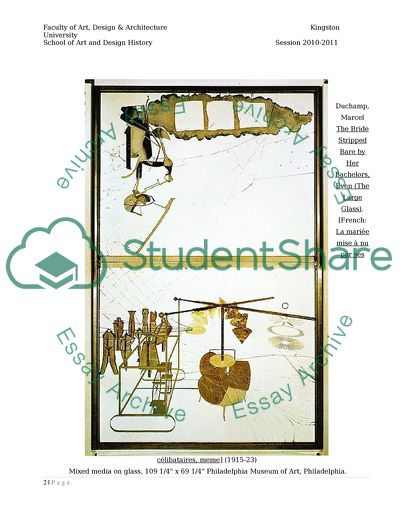Cite this document
(Spectatorship and Duchamp Coursework Example | Topics and Well Written Essays - 1750 words, n.d.)
Spectatorship and Duchamp Coursework Example | Topics and Well Written Essays - 1750 words. https://studentshare.org/visual-arts-film-studies/1747349-spectatorship
Spectatorship and Duchamp Coursework Example | Topics and Well Written Essays - 1750 words. https://studentshare.org/visual-arts-film-studies/1747349-spectatorship
(Spectatorship and Duchamp Coursework Example | Topics and Well Written Essays - 1750 Words)
Spectatorship and Duchamp Coursework Example | Topics and Well Written Essays - 1750 Words. https://studentshare.org/visual-arts-film-studies/1747349-spectatorship.
Spectatorship and Duchamp Coursework Example | Topics and Well Written Essays - 1750 Words. https://studentshare.org/visual-arts-film-studies/1747349-spectatorship.
“Spectatorship and Duchamp Coursework Example | Topics and Well Written Essays - 1750 Words”. https://studentshare.org/visual-arts-film-studies/1747349-spectatorship.


